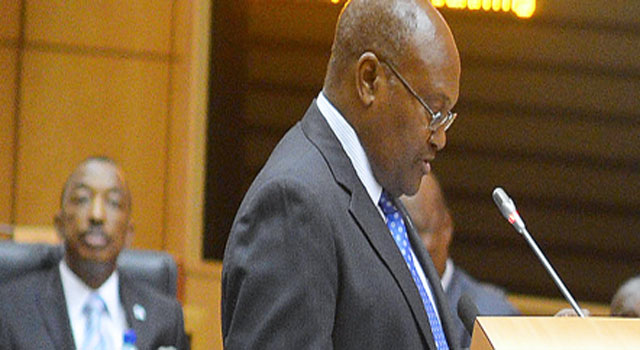Despite the perennial promise to maintain a balanced fiscal budget including the introduction of guiding tools in an effort to keep the budget allocation within acceptable limits, the reality is that achieving this balance has remained a constant challenge for the Botswana Government. With the recent announcement of the 2015 budget the hovering question is whether government has delivered on the main components of its spending position in recent years and most importantly to what extent it has done so. Gazette Business requested Public Spending specialist at the University of Botswana Professor Emmanuel Botlhale to interrogate some of the aspects of government’s recent spending position.
Expenditure Rule
In 2011/12 financial year government revised its spending limit as a percentage of Gross Domestic Product (GDP) downward from 40 percent to 30 percent in view of the possibility of a fall in its revenues. Ministry of Finance and Development planning (MFDP) figures indicate that during the economic crunch financial years (2008/09 and 2009/10) spending escalated above the previous 40 percent limit to which the years following that spending fell down but however treading close to 40 percent. Total spending as a percentage of GDP was 35.7 percent in 2014/15 and is expected to slightly decrease to 34.8 percent in 2015/16. Botlhale advances that government is yet to deliver on its spending rule because spending as a percentage of GDP is unsustainably high.
Attaining a balanced budget
Over the years a great emphasis has been put on spending that is not financed by borrowing or running down of foreign exchanges reserves, referred to as a budget deficit. MFDP figures show that government ran a budget deficit in the economic downturn years which it explains was necessary to keep the economic activity going. Botlhale states that “As a consequence, Botswana is heavily indebted and the foreign exchange reserves have gone done. Therefore, it is important to have a budget surplus to pay back the debt and replenish our foreign exchange reserves.” A meek budget surplus of 1.23 billion or 0.8 percent of GDP is projected for 2015/16 financial year which the budget speech announces will contribute towards rebuilding the foreign exchange reserves.
Maintaining the ratio of recurrent to development spending at 70/30
MFDP admits that keeping the ratio has proved to be intangible blaming it on the fluctuating economic environment. The figures demonstrate that over the years recurrent spending has been surpassing the 70 percent limit whereas development spending has been persistently sitting below the 30 percent limit hence causing a concern. Recurrent spending was at 73.9 percent of total spending in 2014/15 and is anticipated to marginally increase to 76.3 percent in 2015/16 financial year whereas the development budget was underspent at 26.3 percent of total spending and is projected to fall to 23.9 percent in 2015/16. MFDP attributes the under spending to a lack of capacity to spend or a delay in implementing projects which stems as a concern to government given the loss of opportunity to use the available resources. Botlhale estimates that on average 20 percent of the development budget is not spent.
To what extent are the budget’s priorities consistent with prevailing economic challenges? Botlhale answered that “To a large extent, budget’s priorities are consistent with prevailing economic challenges. However, the targets are often missed, hence, the need to double efforts to deliver on budget goals, objectives and targets.”
.

